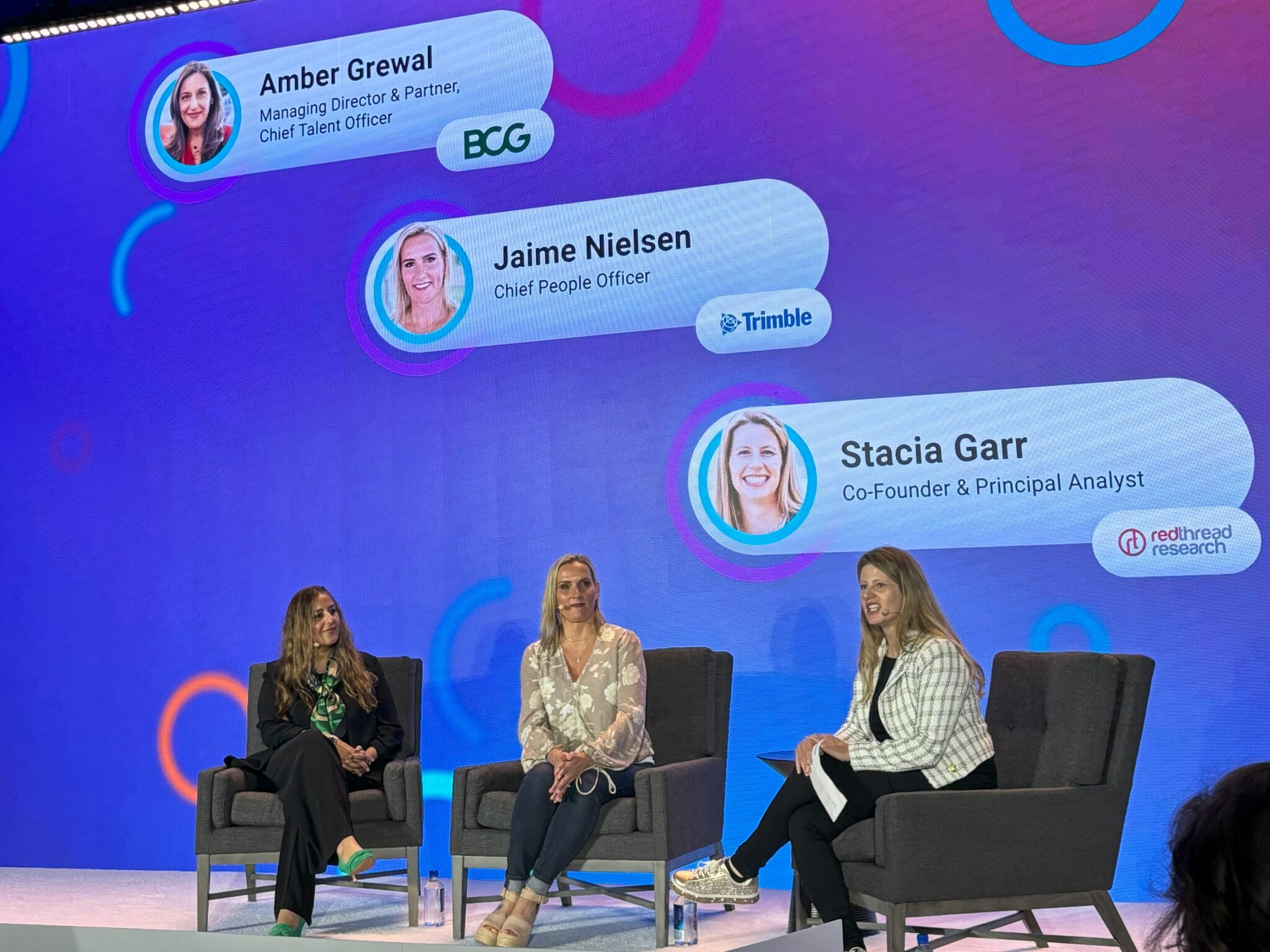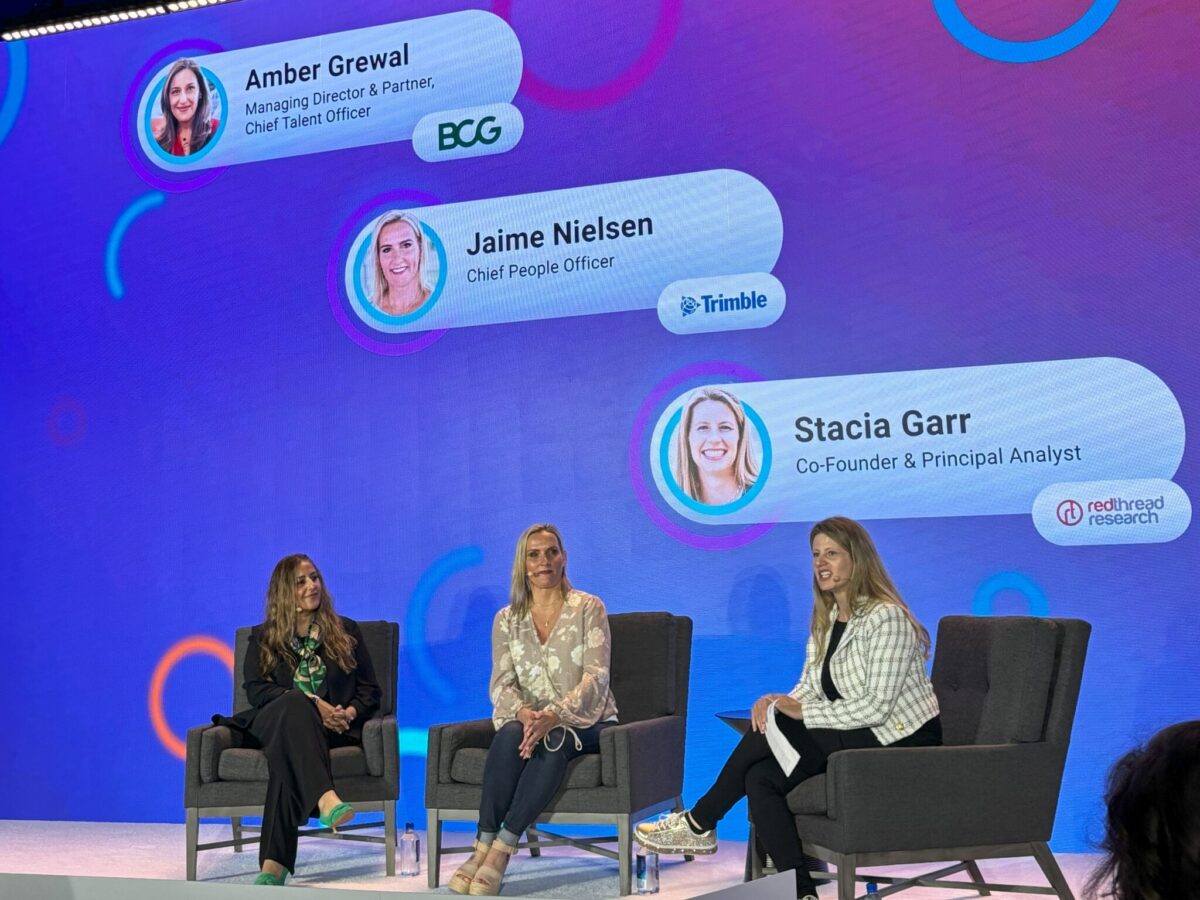Skill availability and a widening talent gap present significant challenges for HR leaders today. According to the World Economic Forum’s Future of Jobs Report 2023, surveyed organizations are relatively confident about developing their current workforce but are less optimistic about the availability of talent over the next five years. The report also highlights that six in 10 workers will require training before 2027, yet only half of the workforce currently has adequate training opportunities.
Evolving your company’s talent strategy is crucial in 2024, according to Stacia Garr, co-founder and principal analyst at RedThread Research. However, nearly halfway through the year, many business and HR leaders are still uncertain about how they will secure the necessary employees to run their organizations. This uncertainty could affect businesses, raising more questions than answers.
Macro forces influence talent outlook
During an expert panel at Eightfold’s annual Cultivate Talent Summit earlier this month, Garr asked Amber Grewal, head of global talent at Boston Consulting Group (BCG), and Jaime Nielsen, chief people officer at industrial technology firm Trimble, about their talent priorities in these changing times and how they are using artificial intelligence to address them.
There are several layers behind today’s instability. Garr cites a significant generational shift, with Gen Z becoming the fastest-growing segment of the workforce. With this momentum, the employee base is equipped with different experiences and technological familiarity than previous generations. Meanwhile, Garr said, geopolitical upheaval creates complex challenges within organizations with diverse teams.
The analyst also points out that power struggles between executive decisions and employee desires—think return-to-office policies and AI utilization—create internal conflicts. This tension impacts business operations and employee satisfaction. All of this sits in the shadow of rapid technological advancements, which many experts expect to reshape how work and business are conducted.

At BCG, talent development is driven by tech-enabled opportunities
Grewal emphasized that HR leaders are simultaneously asked to respond to employees faster, address skill shortages and evolve the company’s talent mix. “The biggest challenge is that change is constant,” said Grewal. She cites that changes in technology and the expectations of employees require business leaders to respond rapidly to compete for the best talent.
“[At BCG,] we knew we needed to be able to not just have one type of value proposition, but a value proposition that could be personalized to many types of skills and talent,” said Grewal.
This can be done by offering employees and potential candidates outlets to advance their careers and capitalize on learning opportunities. She shared that BCG has always prioritized a culture of development, a commitment further elevated by several programs.
The firm offers a unique internal mobility framework for current employees. “As part of our rescaling upskilling aspect, we have something called BCG Pathways, which allows different cohorts of talent to personalize and learn and have journeys based on their career [goals].” She described how this program helps individuals map their career progression by identifying necessary learning, experiences and mentors within the organization.
Grewal said BCG is also experiencing an external talent gap, prompting a need to introduce more people to management consulting, starting as early as the high school level. The people leaders said that many students are unaware of the opportunities in the consulting field, so her organization built an external curriculum to engage young people early.
“One Day at BCG” offers interactive learning in areas like AI, design thinking and strategy consulting. Over half a million students have participated, and Grewal said that learners are proud to earn the badge, which can be displayed on profiles such as LinkedIn. This initiative helps BCG broaden the talent pool and address skill gaps by providing free, high-quality learning experiences applicable to a career in consulting.
Grewal also described BCG’s strong approach to generative AI, with extensive resources and engagement delivered by employees identified as champions and experts to drive an AI-ready culture throughout every office. To build excitement, trust and comprehension of generative artificial intelligence, BCG hosts office hours, town halls and sessions with senior executives demonstrating their use of AI.
Additionally, BCG has a responsible AI council comprised of members from various business units who oversee policies, ethics, technology usage and bias reports. Grewal confirmed these initiatives have been crucial in promoting the adoption and responsible use of AI within the organization.
At Trimble, trust and data quality are top talent priorities
Nielsen added insight into the challenge of predicting future skills gaps and creating a culture of learning and innovation designed to bridge the gap. “Five years ago, it was easy to predict the fields that were going to be needed for the future of the work that we were doing,” said Nielsen. “It is a lot harder now.”
This is one of the reasons her company turned to AI-driven technology. Neilsen said that using Eightfold’s talent intelligence technology has increased internal mobility from less than 20% in 2021 to almost 30% in 2024.
Trimble is also using technology to partner with schools and colleges to attract candidates for key roles, such as truck drivers and field construction workers. “And a lot of that is all about our technology and using gamification to get people interested in fields that they otherwise wouldn’t have been interested in,” she said.
Meanwhile, establishing assurance and data integrity in AI adoption is essential, according to Nielsen. “I think HR organizations have to start building the trust and showing the employees how it will work and how it works to their benefit,” she said. Neilsen said that the “proof points” are increased mobility and an ability to have visibility into how their career path is developed.
Nielsen said her company’s talent philosophy balances a relationship-based history and a data-driven future where integrity and trust remain crucial. She said that the adage “garbage in, garbage out” applies to AI—without clean data, AI outputs are unreliable. “And so, we’ve been working a lot with our technology teams, with our analytics teams and with our end users around the importance of data quality,” she said.
Both leaders encouraged the audience to remain human-centric but open to how technology can build talent resilience. “In terms of a theme [for this conversation], the thing that really jumped out at me was ‘Don’t be paralyzed,’ ” said Garr. “Think through what is it that [you] need as an organization, and let’s get the process started.”
Hear more from RedThread Research at HR Tech Online, coming up for free June 12-13. Dani Johnson, the firm’s co-founder and principal analyst, will present Learning & Development’s Next Chapter: Skills as the North Star. Register now.
The post Here are proven strategies to fill the talent gap with the help of HR tech appeared first on HR Executive.
